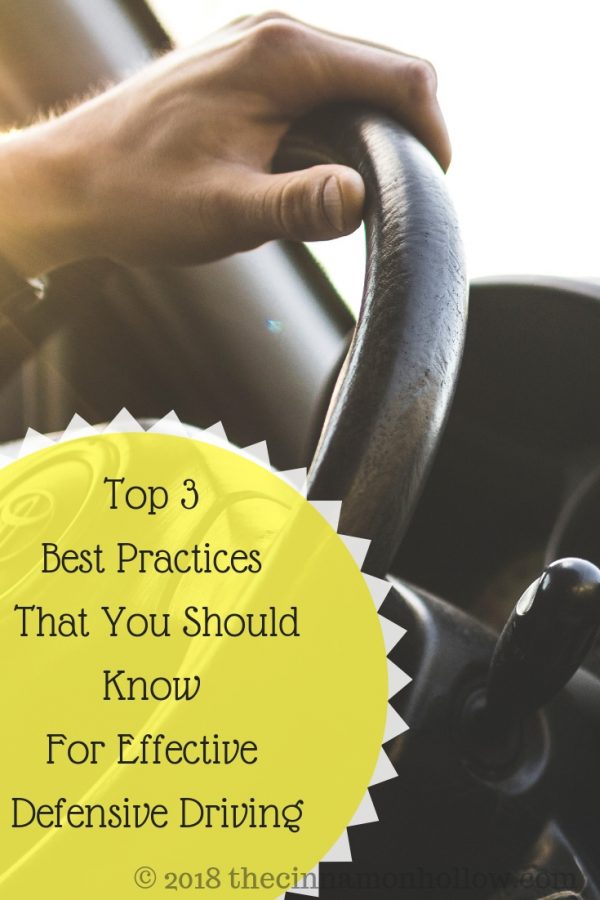While it is true that you cannot control the actions of other drivers, it would be a great help if you update your defensive driving skills to avoid the dangers caused by other people’s bad driving habit.
Sponsored
If you have been driving for a while, you definitely know that not everyone drives well. There are some drivers that aggressively speed or wander in other lanes because they do not pay attention to their driving. There are also others that follow too closely then make a sudden turn without even giving a signal. This kind of driving is very common nowadays and should not be practiced while on the road.

Different Types of Drivers
There are also those that are labeled as aggressive drivers. This type of driver is a road hazard and is the cause of one-third of all the traffic crashes. Another kind of dangerous driving is distracted or inattentive driving. This has become more of a problem since most drivers are multitasking and not fully paying attention to driving while on the road. Most often, they talk over their mobile phones, send, read, and check their inbox, eat, or even watch TV while driving.
What is Defensive Driving?
While it is true that you cannot control the actions of other drivers, it would be a great help if you update your defensive driving skills to avoid the dangers caused by other people’s bad driving habit. Knowing how to adapt and adjust to dangerous driving conditions, reckless drivers, and other unexpected traffic-associated dangers are just some of the reasons why defensive driving courses are given and all drivers are encouraged to attend. Drivers who know how to drive defensively and use the techniques when they are on the road are less likely to be in the middle of traffic accidents.
While it is true that it is not possible to avoid accidents or dangerous road scenarios, having the right skill set to deal with them can potentially save lives and avoid the expense and inconvenience of an accident. Here are some of the top practices that you should know to be able to effectively drive defensively.
1. Do Not Ever Tailgate
When on the road, it is crucial not to follow excessively close as well as discourage other drivers to tail you too narrowly too. If in flowing traffic, allow yourself a full two-second count in terms of the space between your vehicle and the vehicle ahead of you. Make sure to stay calm if you are following a driver driving below the speed limit. You can slow down and provide a cushion to the driver. After that, you can start accelerating to overtake the car when it is safe to do so. In case you have a tailgater driving behind you, ease up on the accelerator then drop your speed temporarily between 5 and 10 miles per hour. When with a tailgater, never use brakes to warn, discourage, or intimidate. Do these things to prevent a car accident Utah I-15 today.
2. Take In The Bigger Picture
Although it is necessary to look ahead you would like to use your peripheral vision while on the road. Do not entirely put your focus on the car ahead of you. If you are driving behind a bigger vehicle and could not see past it, signal and change lanes when it is safe. Check out the lengths of the vehicles ahead of you. Sometimes, you can check from end to end on the windows of the car in your front to see what is ahead of that vehicle. This can help you drive defensively.
3. Always Stay Out of Blind Spots
When driving, make sure that you check your side to see the blind spot prior to changing lanes. This can also prevent your vehicle to be on the blind spot of other drivers. While it may look safe for you to change lanes, make sure to look slightly above and two lanes over. It is important that you avoid staying in the blind spot of another driver. If you happen to pass slower moving vehicles in adjacent lanes, limit your time in that vehicle’s blind spot. Accelerate so the vehicle ahead of you steers over the blind spot and is at least at the same level other vehicle’s front wheels. This will position your vehicle in the peripheral vision of other drivers.
In driving, it does not matter what vehicle you drive or the kind of route you take, driving with others in mind is what will get you to your place of destination safely. There will be frustrating drivers that will test your patience and there will be people who will challenge you to take risks while on the road. However, always remember that your goal should be to move away as far as possible from this kind of driver while on the road. Even you sacrifice your right of way, it is still worth it to avoid an accident and arrive at your destination safely and alive.
Should the unthinkable happen, and you do end up in an accident, it’s always good to know what to do with a damaged car.
Travel Lover | Pet Mama | Beauty Junkie | Low Glycemic – Healthy Fats – Low Carb – Keto Inspired Food Enthusiast | Cocktails | Printables
I am a stay-at-home- mom, living in KY with my husband and children. I’m a travel and lifestyle blogger encouraging folks to live their life one adventure at a time while also focusing on beauty, essential oils and health. From time to time I also like to showcase my adorable pets along with my family. Along with Cinnamon Hollow I can be found at The Martin Family Adventure … read more





